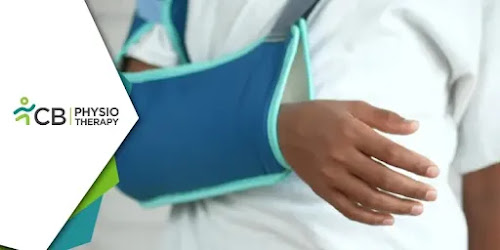A humerus fracture, specifically in the upper arm bone, can result in significant complications, one of which is the development of a condition known as claw hand. This blog explores the relationship between humerus fractures and claw hand, detailing how the injury can lead to this deformity, and highlights the critical role of physiotherapy in both preventing and managing the condition.
Anatomy and Function of the Humerus
The humerus is the long bone in the upper arm that extends from the shoulder to the elbow. It is essential for many arm movements and serves as an attachment point for muscles and ligaments. The nerve most at risk in humerus fractures is the ulnar nerve, which runs near the bone. This nerve controls most of the small muscles in the hand that perform fine movements and provides sensation to the fourth and fifth fingers.
Humerus Fractures: Causes and Types
Humerus fractures can occur due to various reasons, including trauma from falls, sports injuries, or car accidents. These fractures are categorized based on their location:
1: Proximal Humerus Fractures: Near the shoulder joint.
2: Mid-shaft Humerus Fractures: In the middle section of the bone.
3: Distal Humerus Fractures: Near the elbow.
Claw Hand: Understanding the Deformity
Claw hand is characterized by the hyperextension of the metacarpophalangeal joints (knuckles) and flexion of the interphalangeal joints (the first and second joints of the fingers), primarily affecting the fourth and fifth fingers. This condition results in a claw-like appearance and is often a consequence of ulnar nerve damage, which can occur in humerus fractures, particularly those involving the distal humerus or any fracture that disrupts the ulnar nerve.
Role of Physiotherapy in Preventing Claw Hand
Physiotherapy plays a pivotal role in both preventing the onset of claw hand after a humerus fracture and managing the condition if it develops. Here’s how:
1: Early Mobilization and Rehabilitation: Once the fracture is stabilized, early physiotherapy is crucial. Gentle mobilization exercises help maintain joint flexibility and prevent stiffness, reducing the risk of claw hand.
2: Edema Management: Techniques such as elevation, compression, and manual lymphatic drainage help manage swelling, reducing pressure on the ulnar nerve.
3: Nerve Gliding Exercises: These exercises facilitate the smooth movement of the ulnar nerve within its sheath, preventing adhesions and promoting nerve health.
4: Strengthening Exercises: Targeted exercises to strengthen the intrinsic hand muscles (those small muscles within the hand) can help compensate for nerve damage and maintain hand function.
5: Splinting and Orthotics: Custom splints can position the fingers correctly, preventing the clawing position and aiding in functional hand use during the healing process.
Managing Established Claw Hand with Physiotherapy If claw hand has already developed, physiotherapy focuses on maximizing hand function and minimizing deformity:
1: Stretching and Mobilization: Regular stretching exercises for the fingers and hand help reduce contractures and improve range of motion.
2: Functional Training: Task-specific training to improve hand function and dexterity, such as grasp and release exercises, is crucial.
3: Adaptive Techniques and Devices: Training patients to use adaptive devices for daily activities can significantly improve their quality of life.
4: Pain Management: Modalities such as ultrasound, TENS (Transcutaneous Electrical Nerve Stimulation), laser therapy and heat/ cold therapy can help manage pain associated with nerve damage and muscle strain.
5: Continuous Monitoring and Adjustments: Regular assessments and adjustments to the therapy program ensure that it remains effective as the patient progresses.
A humerus fracture can have far-reaching consequences, including the development of claw hand due to ulnar nerve damage. Physiotherapy is indispensable in both preventing and managing this condition, offering a range of interventions from early mobilization to advanced functional training. Through a dedicated and tailored approach, physiotherapy helps restore function, reduce deformity, and improve the overall quality of life for patients affected by this complex injury.



